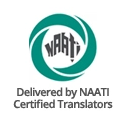About Us
TranslateSwift is an international organization with experienced and professional translators. We translate documents with high accuracy and proficiency. We specialize in translating immigration and business documents as well as any other documents that require translation.
We provide translations in over 120+ languages; our translators are native language speakers and work in teams. These teams proofread and review each translation to ensure accuracy, integrity and premium quality of these...Read More About Us
Languages
- Albanian Translation
- Arabic Translation
- Bulgarian Translation
- Cantonese Translation
- Chinese (Cantonese) Translation
- Chinese (Mandarin) Simplified Translation
- Chinese (Mandarin) Traditional Translation
- Chinese Simplified Translation
- Chinese Traditional Translation
- Creole Translation
- Czech Translation
- Danish Translation
- Dutch Translation
- English Translation
- Farsi Translation
Documents
- Passport Translation
- Birth Certificates Translation
- Adoption Documents Translation
- Diplomas Translation
- Marriage Certificates Translation
- Resumes Translation
- Transcripts Translation
- Patent Documents Translation
- Business Licenses Translation
- Press Releases Translation
- Product Manuals Translation
- Driver’s Licenses Translation
Work With Us
We are always on the lookout for new talent to join our team. If you are passionate about languages and excel in document translation, we would love to hear from you.
Please click here to send us your application, and we will carefully review it.
Address / Office:
TranslateSwift, LLC
1111B S Governors Ave STE 3231
Dover, Delaware
United States.
Please note that all prices are in USD.
Support Email: [email protected]
